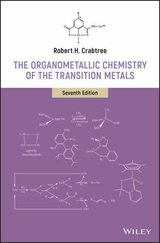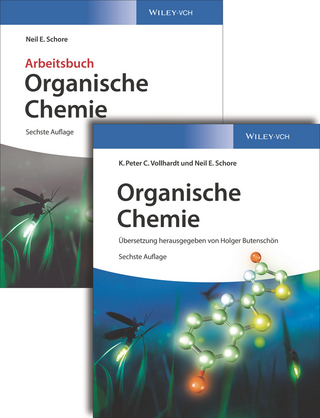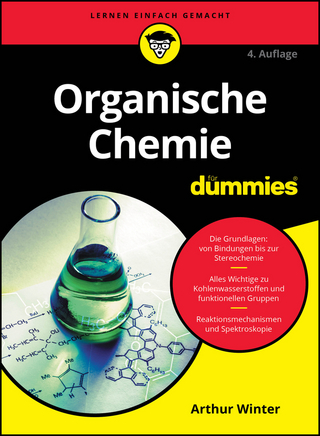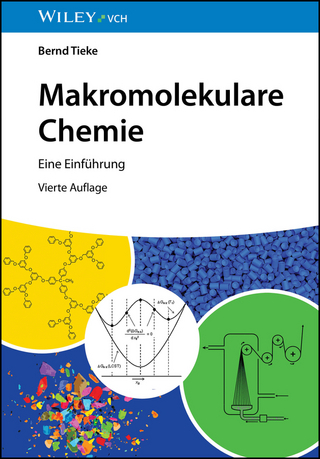
The Organometallic Chemistry of the Transition Metals
John Wiley & Sons Inc (Verlag)
978-1-118-13807-6 (ISBN)
- Titel erscheint in neuer Auflage
- Artikel merken
Fully updated and expanded to reflect recent advances, the sixth edition of this bestselling text provides students and professional chemists with a comprehensive introduction to the principles and general properties of organometallic compounds, as well as including practical information on reaction mechanisms and detailed descriptions of contemporary applications. Increased focus is given to organic synthesis applications, nanoparticle science, and green chemistry. This edition features: * New sections on Multifunctional Ligands, Oxidation Catalysis, and Green Chemistry * Expanded discussion on topics from the fifth edition: Supramolecular Chemistry, N-Heterocyclic Carbenes, Coupling Reactions, Organometallic Materials, Applications to Organic Synthesis, and Bioorganometallic Chemistry * End-of-chapter problems and their solutions
Robert H. Crabtree, Ph. D., is Whitehead professor in the Department of Chemistry at Yale University. He has served on the editorial boards of Chemical Reviews, New Journal of Chemistry, Journal of Molecular Catalysis, and Organometallics and has received numerous awards for his research accomplishments including the Centenary Prize of the Royal Society of Chemistry (2014) and the Organometallic Chemistry Prize of the American Chemical Society (1993).
Preface xi List of Abbreviations xiii 1 Introduction 1 1.1 Why Study Organometallic Chemistry?, 1 1.2 Coordination Chemistry, 3 1.3 Werner Complexes, 4 1.4 The Trans Effect, 9 1.5 Soft versus Hard Ligands, 10 1.6 The Crystal Field, 11 1.7 The Ligand Field, 19 1.8 The sdn Model and Hypervalency, 21 1.9 Back Bonding, 23 1.10 Electroneutrality, 27 1.11 Types of Ligand, 29 References, 37 Problems, 38 2 Making Sense of Organometallic Complexes 40 2.1 The 18-Electron Rule, 40 2.2 Limitations of the 18-Electron Rule, 48 2.3 Electron Counting in Reactions, 50 2.4 Oxidation State, 51 2.5 Coordination Number and Geometry, 57 2.6 Effects of Complexation, 60 2.7 Differences between Metals, 63 References, 66 Problems, 67 3 Alkyls and Hydrides 69 3.1 Alkyls and Aryls, 69 3.2 Other -Bonded Ligands, 84 3.3 Metal Hydrides, 86 3.4 Sigma Complexes, 89 3.5 Bond Strengths, 92 References, 95 Problems, 96 4 Carbonyls, Phosphines, and Substitution 98 4.1 Metal Carbonyls, 98 4.2 Phosphines, 109 4.3 N-Heterocyclic Carbenes (NHCs), 113 4.4 Dissociative Substitution, 115 4.5 Associative Substitution, 120 4.6 Redox Effects and Interchange Substitution, 122 4.7 Photochemical Substitution, 124 4.8 Counterions and Solvents in Substitution, 127 References, 129 Problems, 131 5 Pi-Complexes 134 5.1 Alkene and Alkyne Complexes, 134 5.2 Allyls, 140 5.3 Diene Complexes, 144 5.4 Cyclopentadienyl Complexes, 147 5.5 Arenes and Other Alicyclic Ligands, 154 5.6 Isolobal Replacement and Metalacycles, 158 5.7 Stability of Polyene and Polyenyl Complexes, 159 References, 160 Problems, 161 6 Oxidative Addition and Reductive Elimination 163 6.1 Introduction, 163 6.2 Concerted Additions, 166 6.3 SN2 Pathways, 168 6.4 Radical Mechanisms, 170 6.5 Ionic Mechanisms, 172 6.6 Reductive Elimination, 173 6.7 -Bond Metathesis, 179 6.8 Oxidative Coupling and Reductive Fragmentation, 180 References, 182 Problems, 182 7 Insertion and Elimination 185 7.1 Introduction, 185 7.2 CO Insertion, 187 7.3 Alkene Insertion, 192 7.4 Outer Sphere Insertions, 197 7.5 , , , and Elimination, 198 References, 201 Problems, 201 8 Addition and Abstraction 204 8.1 Introduction, 204 8.2 Nucleophilic Addition to CO, 207 8.3 Nucleophilic Addition to Polyenes and Polyenyls, 208 8.4 Nucleophilic Abstraction in Hydrides, Alkyls, and Acyls, 215 8.5 Electrophilic Addition and Abstraction, 216 8.6 Single-Electron Transfer and Radical Reactions, 219 References, 221 Problems, 222 9 Homogeneous Catalysis 224 9.1 Catalytic Cycles, 224 9.2 Alkene Isomerization, 231 9.3 Hydrogenation, 233 9.4 Alkene Hydroformylation, 242 9.5 Alkene Hydrocyanation, 245 9.6 Alkene Hydrosilylation and Hydroboration, 246 9.7 Coupling Reactions, 248 9.8 Organometallic Oxidation Catalysis, 250 9.9 Surface, Supported, and Cooperative Catalysis, 251 References, 253 Problems, 256 10 Physical Methods 259 10.1 Isolation, 259 10.2 1H NMR Spectroscopy, 260 10.3 13C NMR Spectroscopy, 264 10.4 31P NMR Spectroscopy, 266 10.5 Dynamic NMR, 268 10.6 Spin Saturation Transfer, 271 10.7 T1 and the Nuclear Overhauser Effect, 272 10.8 IR Spectroscopy, 276 10.9 Crystallography, 279 10.10 Electrochemistry and EPR, 281 10.11 Computation, 283 10.12 Other Methods, 285 References, 287 Problems, 288 11 M L Multiple Bonds 290 11.1 Carbenes, 290 11.2 Carbynes, 302 11.3 Bridging Carbenes and Carbynes, 305 11.4 N-Heterocyclic Carbenes, 306 11.5 Multiple Bonds to Heteroatoms, 310 References, 313 Problems, 315 12 Applications 317 12.1 Alkene Metathesis, 317 12.2 Dimerization, Oligomerization, and Polymerization of Alkenes, 324 12.3 Activation of CO and CO2, 332 12.4 C H Activation, 336 12.5 Green Chemistry, 343 12.6 Energy Chemistry, 344 References, 347 Problems, 349 13 Clusters, Nanoparticles, Materials, and Surfaces 353 13.1 Cluster Structures, 354 13.2 The Isolobal Analogy, 364 13.3 Nanoparticles, 368 13.4 Organometallic Materials, 371 References, 379 Problems, 381 14 Organic Applications 383 14.1 Carbon Carbon Coupling, 384 14.2 Metathesis, 391 14.3 Cyclopropanation and C H Insertion, 393 14.4 Hydrogenation, 394 14.5 Carbonylation, 396 14.6 Oxidation, 399 14.7 C H Activation, 401 14.8 Click Chemistry, 405 References, 406 Problems, 408 15 Paramagnetic and High Oxidation-State Complexes 411 15.1 Magnetism and Spin States, 413 15.2 Polyalkyls and Polyhydrides, 420 15.3 Cyclopentadienyl Complexes, 425 15.4 f-Block Complexes, 426 References, 433 Problems, 435 16 Bioorganometallic Chemistry 436 16.1 Introduction, 437 16.2 Coenzyme B12, 442 16.3 Nitrogen Fixation, 449 16.4 Nickel Enzymes, 457 16.5 Biomedical and Biocatalytic Applications, 463 References, 465 Problems, 467 Appendix A: Useful Texts on Allied Topics 469 Appendix B: Major Reaction Types and Hints on Problem Solving 472 Solutions to Problems 475 Index 493
| Verlagsort | New York |
|---|---|
| Sprache | englisch |
| Maße | 167 x 240 mm |
| Gewicht | 960 g |
| Themenwelt | Naturwissenschaften ► Chemie ► Organische Chemie |
| ISBN-10 | 1-118-13807-4 / 1118138074 |
| ISBN-13 | 978-1-118-13807-6 / 9781118138076 |
| Zustand | Neuware |
| Informationen gemäß Produktsicherheitsverordnung (GPSR) | |
| Haben Sie eine Frage zum Produkt? |
aus dem Bereich



